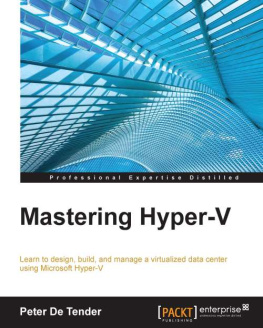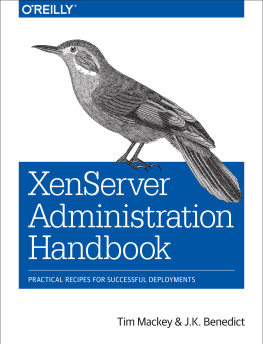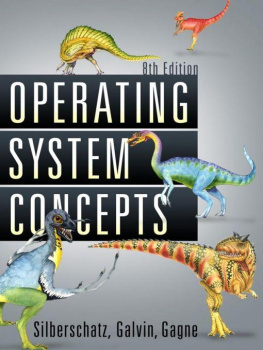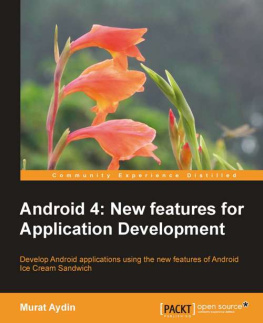Chaganti - Xen Virtualization: a Practical Handbook
Here you can read online Chaganti - Xen Virtualization: a Practical Handbook full text of the book (entire story) in english for free. Download pdf and epub, get meaning, cover and reviews about this ebook. City: Birmingham, year: 2007, publisher: Packt Publishing Ltd, genre: Computer. Description of the work, (preface) as well as reviews are available. Best literature library LitArk.com created for fans of good reading and offers a wide selection of genres:
Romance novel
Science fiction
Adventure
Detective
Science
History
Home and family
Prose
Art
Politics
Computer
Non-fiction
Religion
Business
Children
Humor
Choose a favorite category and find really read worthwhile books. Enjoy immersion in the world of imagination, feel the emotions of the characters or learn something new for yourself, make an fascinating discovery.
Xen Virtualization: a Practical Handbook: summary, description and annotation
We offer to read an annotation, description, summary or preface (depends on what the author of the book "Xen Virtualization: a Practical Handbook" wrote himself). If you haven't found the necessary information about the book — write in the comments, we will try to find it.
Abstract: A fast and practical guide to supporting multiple operating systems with the Xen hypervisor
Chaganti: author's other books
Who wrote Xen Virtualization: a Practical Handbook? Find out the surname, the name of the author of the book and a list of all author's works by series.
Xen Virtualization: a Practical Handbook — read online for free the complete book (whole text) full work
Below is the text of the book, divided by pages. System saving the place of the last page read, allows you to conveniently read the book "Xen Virtualization: a Practical Handbook" online for free, without having to search again every time where you left off. Put a bookmark, and you can go to the page where you finished reading at any time.
Font size:
Interval:
Bookmark:
Copyright 2007 Packt Publishing
All rights reserved. No part of this book may be reproduced, stored in a retrieval system, or transmitted in any form or by any means, without the prior written permission of the publisher, except in the case of brief quotations embedded in critical articles or reviews.
Every effort has been made in the preparation of this book to ensure the accuracy of the information presented. However, the information contained in this book is sold without warranty, either express or implied. Neither the author, Packt Publishing, nor its dealers or distributors will be held liable for any damages caused or alleged to be caused directly or indirectly by this book.
Packt Publishing has endeavored to provide trademark information about all the companies and products mentioned in this book by the appropriate use of capitals. However, Packt Publishing cannot guarantee the accuracy of this information.
First published: December 2007
Production Reference: 1181207
Published by Packt Publishing Ltd. 32 Lincoln Road Olton Birmingham, B27 6PA, UK.
ISBN 978-1-847192-48-6
www.packtpub.com
Cover image by Bruno Abarca, <>
Author
Prabhakar Chaganti
Reviewer
Paul Wouters
Stefano Maccaglia
Senior Acquisition Editor
David Barnes
Development Editor
Nikhil Bangera
Technical Editor
Akshara Aware
Editorial Team Leader
Mithil Kulkarni
Project Manager
Abhijeet Deobhakta
Project Coordinator
Patricia Weir
Sagara Naik
Indexer
Hemangini Bari
Proofreader
Susan Tase
Production Coordinator
Shantanu Zagade
Cover Designer
Shantanu Zagade
Prabhakar Chaganti is the CTO of HelixBraina unique startup that provides technology service consulting and is also an incubator that nurtures some very cool software as services applications that are being built on the Ruby on Rails platform.I would
would like to thank the reviewer for his helpful and incisive comments, which have helped in making this a better book. The staff at Packt provided great support as always.This book is dedicated in the memory of my parentsKarunakar and Adilakshmi Chaganti. Lots of love to my wife Nitika whose support and exhortations were the rails upon which this book rolled into the station. Love to my two precious daughtersAnika and Anya.
Paul Wouters has been involved with Linux networking and security since heco-founded the Dutch ISP 'Xtended Internet' back in 1996, where he started working with FreeS/WAN IPsec in 1999 and with DNSSEC for the .nl domain in 2001.
He has been writing since 1997, when his first article about network security was published in Linux Journal in 1997. He still writes on occastion for the Dutch "c't Magazine", focussing on Linux, networking and the impact of the digital world on society. He has presented papers at Sans, SecTor, BlackHat, DefCon, CCC, and several other conferences.
He co-founded Xelerance in 2003, focusing on IPsec, DNSSEC, and virtualization, where he is responible for the development of enterprise appliances simplifying the management of these complex security technologies. He is also the release manager for the Linux Openswan IPsec suite.
Stefano Maccaglia is an Italian, Ethical Hacker and Network professional. In 1997, he started his career as a technician in Compaq (Italy). He has worked in Australia, New Zealand, and US and for the past 10 years he has been involved in many projects. Currently, he is a Consultant and Trainer in Poste Italiane, however, he continuously supports the BlackSun Factory Tiger team. Stefano is preparing a book on Network Admission Control framework, which is based on the experience he has gained in the last two years. He participates actively on the security research field.
I would like to thank my wife Lorena for her love, support, and patience. I would also like to thank my entire crew at BlackSun Factory for their friendship, help, and the spirit that they put in the hacking matter and in everyday life.
This book covers Xenan open-source paravirtualization technology that provides a platform for running multiple operating systems on one physical hardware resource, while providing close to native performance. Xen supports several operating systemsLinux, FreeBSD, Windows, and NetBSD. It was originally developed in 2003 at the University of Cambridge Computer Laboratory and now both commercial and free versions of the Xen hypervisor are available. The commercial versions are built on top of the open-source version and have additional enterprise features. In this book we explore and use the open-source version of Xen.
Each chapter in this book is a collection of practical tasks that demonstrates how to achieve common virtualization tasksyou then learn how it works so that you can apply this knowledge to your Xen installation and environment.
introduces the world of Xen and virtualization. It discusses the concepts and advantages of using Xen.
walks us through the installation of Xen on a Fedora Core system. It discusses installation using yum and also installation by compiling from source.
creates virtual machines or Xen guest domains that run on top of our Fedora Core system. Ubuntu Feisty, NetBSD, CentOS, and Slackware domains are created.
explores the management tools available for administering Xen instances. It shows how to install and use xm, XenMan, and virt-manager.
examines some of the networking options that are available when using Xen and walks through both bridged and routed networking configurations for connecting guest domains to each other as well as to the outside world.
walks us through some of the storage options that can be used for storing Xen domains. Storage systems such as the file system, Network File System (NFS), and Logical Volume Management (LVM) are discussed.
shows how to secure Xen domains by encrypting the root file systems. The two techniques covered are plain device mapper-based encryption and key-based encryption using LUKS.
introduces the options available for the migration of Xen instances. We will save and restore domains, and explore live migration. We will also look at what happens behind the scenes when Xen performs a live migration of a domain.
talks about some of the newer ideas based on Xen such as libvirta virtualization API for interacting with multiple virtualization implementations, and VMCastingan RSS based technology that can automate the deployment of Xen images using the RSS 2.0 format.
In this book, you will find a number of styles of text that distinguish between different kinds of information. Here are some examples of these styles, and an explanation of their meaning.
There are three styles for code. Code words in text are shown as follows: "Create a directory named xen-images. We will create all our guest images in this directory."
A block of code will be set as follows:
Any command-line input and output is written as follows:
New terms and important words are introduced in a bold-type font. Words that you see on the screen, in menus or dialog boxes for example, appear in our text like this: "clicking the
Font size:
Interval:
Bookmark:
Similar books «Xen Virtualization: a Practical Handbook»
Look at similar books to Xen Virtualization: a Practical Handbook. We have selected literature similar in name and meaning in the hope of providing readers with more options to find new, interesting, not yet read works.
Discussion, reviews of the book Xen Virtualization: a Practical Handbook and just readers' own opinions. Leave your comments, write what you think about the work, its meaning or the main characters. Specify what exactly you liked and what you didn't like, and why you think so.

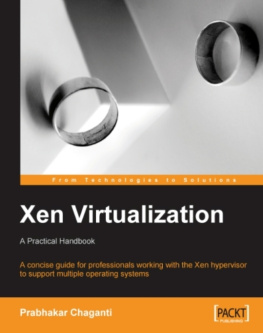
![Chaganti - Windows PowerShell desired state configuration revealed : [everything you need to know about automating configuration management in Windows]](/uploads/posts/book/108853/thumbs/chaganti-windows-powershell-desired-state.jpg)




